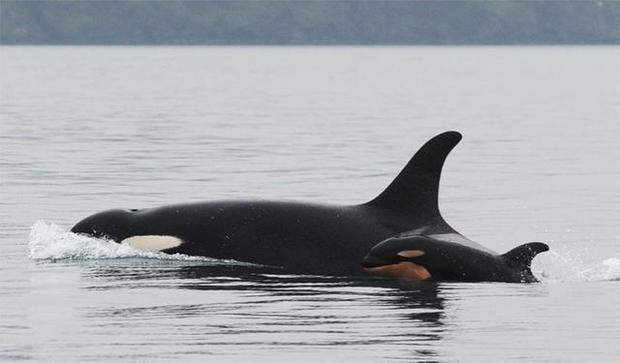forum
library
tutorial
contact

Saving the Orcas
of Puget Sound
by Sam Heller
E - The Environmental Magazine, February 4, 2020
|
the film forum library tutorial contact |

|
Saving the Orcas
by Sam Heller
|
 In the Puget Sound, a once healthy population of orcas is currently facing extinction. Though nearly 100 of these whales lived in the region during the mid 1990s, this number has fallen to just 73. If the downward trend continues for much longer, their survival into the future will cease to be possible.
In the Puget Sound, a once healthy population of orcas is currently facing extinction. Though nearly 100 of these whales lived in the region during the mid 1990s, this number has fallen to just 73. If the downward trend continues for much longer, their survival into the future will cease to be possible.
There are several reasons for this sharp decline.
One is boat noise. Since orcas use echolocation to detect their prey, any excess sound traveling through the water inhibits their hunting ability. Unfortunately, the amount of excess sound they have to deal with has become very high. In addition to the growing amount of private boat traffic present in the Sound, commercial whale watching boats frequently track and follow the orcas. Unfortunately, whale watching activity is highest in the summer, which is also the period during which salmon are at their peak levels in the Sound.
Another huge threat is pollution. Since orcas are at the top of the food chain, they quickly accumulate toxins that are present in their environment. This issue has become massive. Sadly, it is now possible to identify the region dead orca spent most of its time in, simply by determining what types of toxins are present in its body.
The biggest problem for these whales though, is the lack of available food. Local chinook salmon populations (the orcas' primary prey) are a fraction of what they used to be. This dearth has largely been a product of overfishing, and the damming of spawning rivers. While government restrictions can easily reduce fishing activity, the latter of these two issues is very difficult to address.
The dams causing most of the controversy are located on the Snake river. The fact that they add value to the lives of many is indisputable. In addition to generating hydroelectricity, these dams facilitate the movement of boats carrying cargo. Unfortunately however, they also impede salmon as they attempt to swim up and down the river. Though fish ladders are installed in an effort to help the salmon make their journey, these technologies are only partially effective. They help, but are not entirely effective at ferrying all the salmon that attempt to make the long swim upriver.
The lack of food caused by the dams and overfishing is wreaking havoc on the orcas' health. Most of their pregnancies now end in miscarriage, and several members of the pods have died quite recently. One of these was a young calf, whose mother spent 17 days pushing her lifeless body to the surface before finally letting her go. Another was a juvenile whale who scientists attempted to help with dart-delivered medicine. These efforts ultimately proved in vain.
Part of the issue is believed to stem from the fact that orcas are now metabolizing excessive amounts of their fat, due to the lack of immediately available calories. This fat contains the toxins that have worked their way up the food chain. Once metabolized, these toxins leach into the whales' bloodstreams. This phenomenon, coupled with the other issues associated with caloric restriction, are stripping the whales of their energy and immunity.
It is generally agreed that removing the dams would be the best way of providing the orcas with a chance of survival. One study predicted that the salmon population in the Snake river would increase two to three fold if the removal of four dams took place. Bolstering the case for removal is the fact that freight volume on the river has declined by over 50%, and container shipments have fallen to zero. These declines have largely resulted from the fact that grain and other products originating from the region are increasingly being transported by rail and trucks. Dam removal is also starting to make sense from an energetic perspective, as the Northwest region increasingly derives its energy from renewables such as wind and solar.
If you would like to help the orcas of Puget Sound, there are many ways in which you can do so. Those living in the Northwest region can help by capturing rainwater off their roofs, and thereby preventing it from picking up pollution on the streets and flowing into the ocean. Another good measure is taking cars to car washes instead of washing them by hand. This helps because the law requires car washes to capture and filter the waste water they produce before releasing it back into the environment. Minimizing the use of lawn care products is another good measure.
If you'd like to see the dams come down, you can write to elected officials. In particular, consider writing a letter to Washington's governor and or senators, Jay Inslee, and Patty Murray and Maria Cantwell, respectively. If you'd rather not write a whole letter, a fast and easy way of showing your support for the removal of the dams is by signing this petition. Finally, if would like to see these orcas in person, please watch them from the shore.
Though the challenge is large, we still have time to save these beautiful creatures from extinction. By raising public awareness and practicing activism, we can give the orcas a fighting chance to survive into the future, and continue to grace the Northwest with their mystical presence.
learn more on topics covered in the film
see the video
read the script
learn the songs
discussion forum
